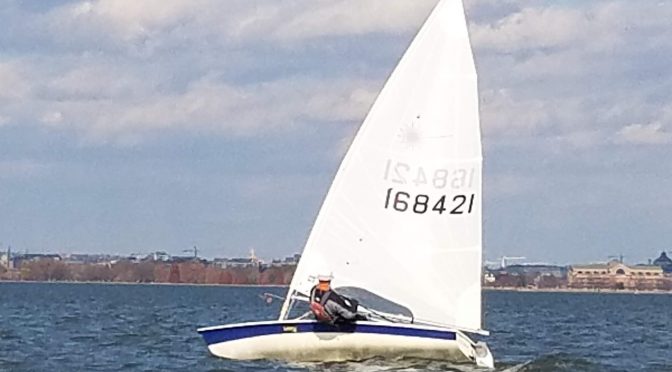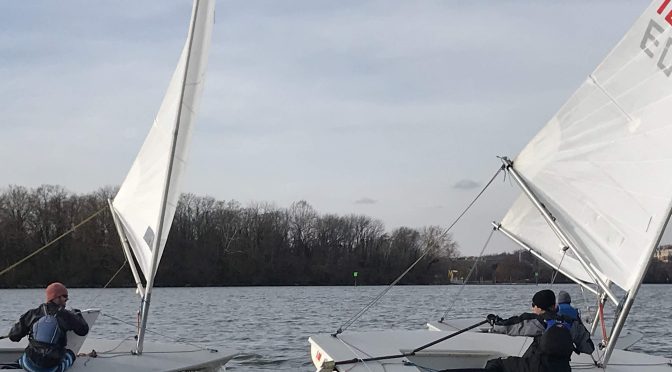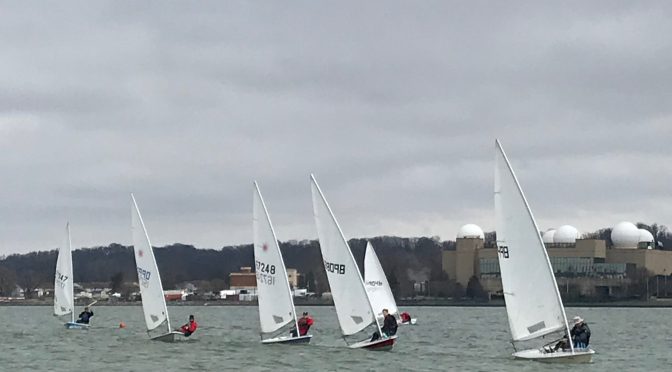Category Archives: 2019
2019-2020 Laser Frostbite Series #4
2019-2020 Laser Frostbite Series #1
2019 Spring Series #2
We had another nice day with a solid southerly breeze for our second spring series day. Temps were in the upper 60s . All in all it was another great day of sailing!
2019-Spring-2-Albacore
2019-Spring-2-Buccaneer
2019-Spring-2-I-20
2019-Spring-2-Lightning
2019 Spring Series #1
We had a really nice first day for the spring series. We had a lot of boats out, nice weather (75 or so) and breeze around 10 knots nice and steady out of the south. We had a nice turnout for the potluck afterwards as well.
2019-Spring-1-Albacore
2019-Spring-1-Buccaneer
2019-Spring-1-I-20
2019-Spring-2-Multi-Hull
2019-Spring-1-Lightning
2018-2019 Laser Frostbite Series #17
2018-2019 Laser Frostbite Series #16
It was a beautiful day on the river. Sunny and warm with intermittent good wind. Although I finished in roughly the same place I do most Sundays (that is, near the back with a rare strong race), today worked in my favor as there were only 5 or 6 boats, leaving me with my first 3rd place finish. The wind was flukey, very light at times followed by a strong steady breeze. The wind kept shifting at the beginning, making it nearly impossible to set a windward-leeward course. In fact, the first race turned into reaches both ways. After the first race, the wind held relatively steady – in direction if not speed, allowing us to get in lots of races. With a small fleet, it was much easier for those of us new to Laser racing to be aggressive at the start and at the marks – instead of being out strategized by lots of boats, there was only one or two to content with at each rounding. The shifty wind favored those with good tactics and a good sense of the river winds – boats well ahead often lost considerable ground to others on a different tact, seemingly at random but clearly not since the top two boats consistently finished 1-2. The winds also, at times, left the fleet bobbing in the water for a few minutes before picking up again (I’m guessing the windier parts of the day were above 10 knots if not more). As a new racer, I found the smaller fleet a great opportunity to work on sail trim, starts and mark roundings. Other than to note a number of us have been talking about finding times this spring and summer to sail, not much else to report other than to thank the race committee and to encourage people to come out for the last few weekends of the series.
2018-2019 Laser Frostbite Series #15
2018-2019 Laser Frostbite Series #14
2018-2019 Laser Frostbite Series #13
Today was looking a little iffy when we woke up this morning. With a pending gale warning starting at 3, we were not too sure what the weather was going to have in store for us. Nabeel and Kevin were on race committee and were optimistic to get some races in before the gale came. We decided that we would go out and race until the wind shifted to the west which would be when the big breeze would come in.
We ended up getting 5 races in without the wind ever getting too crazy. With the sun out and the temperature getting close to 60 as well as breeze in the upper teens and low twenties I doubt anyone was cold today. We did triangles for the first 4 races and finished with windward leeward for the last race. There was lots of capsizing, I do not think anyone made it through the day without at least one. The breeze was mostly out of the south but there were some small shifts that had to be looked for, The first 2 races had the most breeze and then everything kind of moderated out to something in the mid teens.
With a south breeze, a flooded river, and changing high to low tide, the long upwind leg didnt take too long due to the current. The triangle courses didn’t allow much to happen tactically outside of sailing fast, keeping the boat moving, and not capsizing (or if you did capsize have a quick recovery). But the downwinds were pretty fun with some nice waves to surf. But the waves were fairly choppy and I found it best to move your weight forward and backward in the boat. This was both to keep the boat on the wave as well as not dive your bow into the wave in front of you.
All in all, it turned out to be a very nice day on the water and the high winds never really seemed to show up. Just goes to show that the forecasts are not always right and its always worth coming down to the marina to at least see what is going on.



